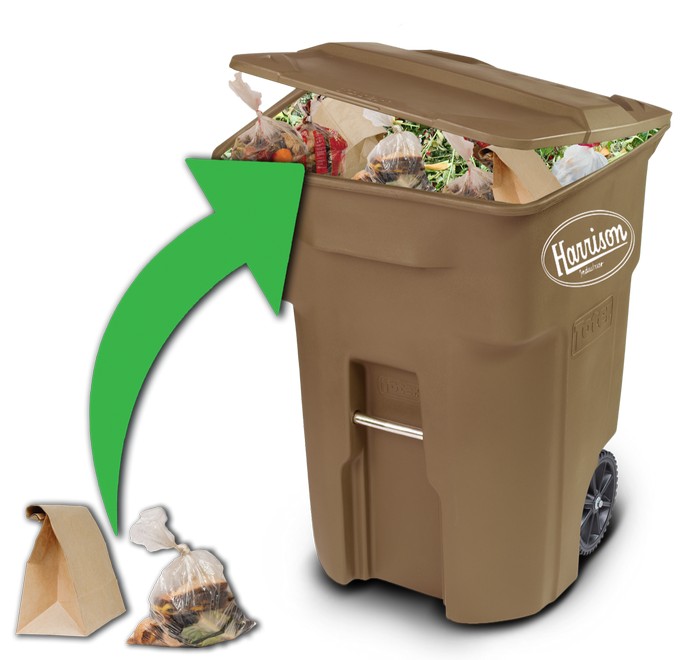Food scraps should be bagged and placed in your green waste cart.
by Jill Sarick Santos
Composting vegetable scraps instead of landfilling them is one tiny step in the right direction to help lessen the ramifications from climate change. It is easy to do. It does not cost anything extra. And you could be saving the world.
But there are still folks who think it is a waste of their time. They say it is just one more unnecessary governmental regulation that is killing California.
Regardless of whether you believe that climate change is really happening or hesitate to name who or what is the primary contributor, the obvious fact remains that weather patterns have changed dramatically over the last decade. Those of us in the field of environmental protection, conservation, forestry or agriculture, have been talking about this sort of stuff for years.
It does not matter what or who is responsible or why and how it got so bad so quickly, it matters that you stop whatever it is you are doing right now and take a good look around you. Listen, look, observe. What is different? Can you spot or identify 5 differences in the last decade? Last five years? Last year?
As our busy lives move in an ever-busier pace, we might fail to recognize obvious signs that the climate is indeed changing. For example, in the last ten years, droughts in Southern California have been longer, more extreme and occur in more frequent intervals than in the last twenty years. We have seen more record-breaking high temperatures in the last decade than many previous. And those groups of people mass migrating from their homeland to wealthier, more developed places; that’s climate change influenced without question. The real question is, what can one person really do to stop something so overwhelming? Starting with placing your food scraps in the organics cart so that it will be composted instead of becoming greenhouse-producing-methane-gas seems like a no brainer to me.
The obvious and now essentially required first step is to ensure that food scraps, including things like peels, pieces, stems, shells, bones, and sauces, dairy, meat, fruit and vegetables, and food soiled paper should be bagged (in any preferably plastic bag) and placed in your green waste cart, now called the organics cart. If you are a commercial business or live in a multi-family residential property without a curbside cart, be sure to check with your city’s environmental division to comply with the regulations.
So, the next time you see a neighbor ranting about the city’s new food waste program on social media, tell them to chill out and share this article. If each one of us does our little part, that is seven billion little parts all working together to save the one and only place we call home: Earth.

